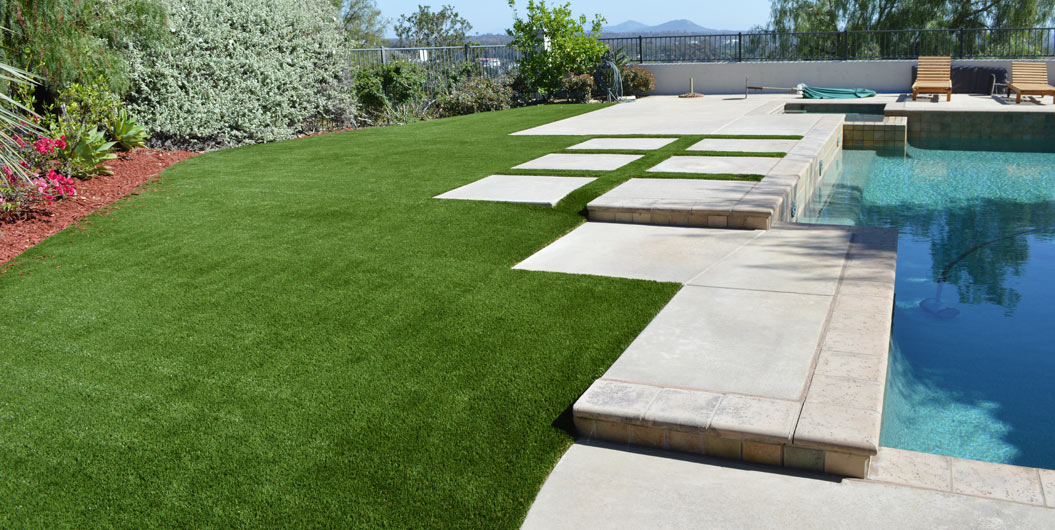Why Artificial Grass Is Eco-friendly In San Diego Ca?

- One of the most significant environmental benefits of artificial grass is its ability to conserve water. Natural grass lawns require substantial amounts of water to stay green and healthy, especially in arid regions where water is scarce. By switching to artificial grass, you can significantly reduce your water consumption. This not only helps conserve this precious resource but also reduces the energy required for water purification and distribution. According to the Environmental Protection Agency (EPA), the average American household uses about 320 gallons of water per day, with a significant portion going towards outdoor landscaping. Artificial grass eliminates this unnecessary water usage, making it a smart choice for water-conscious individuals.
- Maintaining a lush natural lawn often involves the use of pesticides and herbicides to control pests and weeds. These chemicals can have adverse effects on the environment, as they can leach into the soil and contaminate water sources. Additionally, their application poses health risks to humans and animals. Artificial grass eliminates the need for these harmful chemicals, creating a safer and more environmentally friendly outdoor space. Without the use of pesticides and herbicides, you can contribute to a healthier ecosystem.
- Traditional lawn care equipment, such as lawnmowers and trimmers, are typically powered by gasoline engines. The emissions from these machines contribute to air pollution and greenhouse gas emissions, which are major contributors to climate change. By switching to artificial grass, you reduce the need for regular mowing and maintenance, thus decreasing your carbon footprint. Artificial grass requires minimal maintenance, such as occasional brushing and debris removal, which can be done using manual tools or electric equipment with lower emissions. This shift towards more eco-friendly maintenance practices can have a positive impact on the environment.
- The installation of natural grass lawns often involves the removal of existing vegetation and disruption of natural habitats. This can harm local wildlife and reduce biodiversity. In contrast, artificial grass installation minimizes disruption to ecosystems since it doesn’t require extensive digging or soil disturbance. By choosing synthetic turf, you help preserve natural habitats and support local wildlife.
- Artificial grass is designed to withstand harsh weather conditions, including extreme heat, heavy rainfall, and freezing temperatures. It doesn’t require the frequent replacement, watering, or fertilizing that natural grass does. This durability translates to fewer resources being consumed over time and less waste ending up in landfills. Additionally, many manufacturers are now producing artificial grass using recycled materials, further reducing its environmental impact.
FAQs
Is Artificial Grass Safe For Children And Pets?
Yes, artificial grass is safe for children and pets. It is made from non-toxic materials and does not require the use of harmful chemicals like pesticides or herbicides. Additionally, it provides a clean and mud-free surface for play and eliminates the risk of allergic reactions to grass pollen.
Can Artificial Grass Be Recycled?
Yes, many artificial grass products are recyclable. When it’s time to replace your synthetic turf, you can contact recycling facilities that specialize in reusing the materials, reducing waste and environmental impact.
Does Artificial Grass Get Hot In The Sun?
Artificial grass can become warm in direct sunlight, but it does not reach the scorching temperatures that some people associate with artificial surfaces like pavement or asphalt. Some newer artificial grass products incorporate cooling technology to reduce heat buildup.
Conclusion
Artificial grass offers a host of eco-friendly benefits, from water conservation and reduced pesticide use to lower carbon emissions and habitat preservation. By choosing synthetic turf for your landscaping needs, you can create a beautiful and sustainable outdoor space that benefits both you and the environment. With the right care, artificial grass can be a long-lasting and environmentally responsible choice for any property. For more information, contact Artificial Turf San Diego Ca at (619) 369-0049.